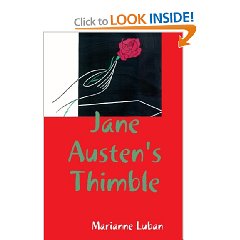I therefore wonder if Zivie gave any thought, in his other book on the tomb, as to whether this was the same Thothmes who eventually sculpted the bust of Queen Nerfertiti, above. [This was discovered in what is thought to have been the workshop of a Thothmes at el Amarna.] Why wouldn't it be possible? After all, Michelangelo was both a great painter and sculptor. If Thothmes had actually lived at Akhetaten full-time, the master would have surely been afforded the honor of a tomb by the king, but none has been found among those of the important men of the royal city. In fact, Thothmes never even changed his name, although his patron deity, Thoth, was outlawed by Akhenaten along with the other old gods of Egypt. It would seem that one official of the pharaoh who did have a tomb at Akhetaten, Tutu, probably did once also have a name that incorporated that of Thoth--but changed his.
Thothmes had apparently already resided at Memphis in the time of Akhenaten's father, Amenhotep III because, in Bubasteion I.19, the painting of his wife bears the snub-nosed face of the latter of the kind seen in his late portraits. There is also the evidence of the palette. Therefore, the tomb must have been begun toward the end of the reign of Amenhotep III. However, the face of Thothmes, himself, appears to have been painted in the image of Akhenaten, with his long nose, as was the custom. This is rather extraordinary and one does not know what to conclude. Was it a recognition of a co-regent who was gaining power--or did Thothmes, himself, really look like that? Did he, for once, paint his own visage instead of that of the ruler? At any rate, the tomb of Thothmes did see changes, in the texts, that reflect the religious reformation. No matter where Thothmes ended up living or working, it seems he did not veer from his intent to be interred in the double sarcophagus he had commissioned for himself and his wife and which is also depicted in Bubasteion I.19.









No comments:
Post a Comment